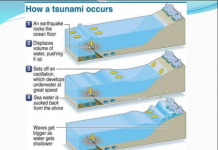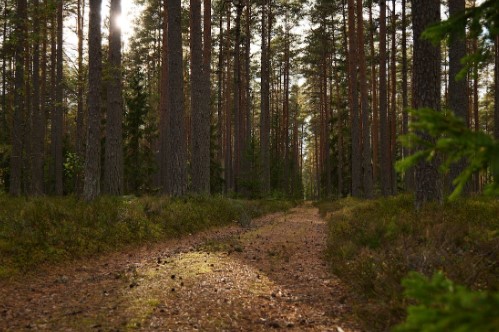A Coastal Cliffs face provides a rare opportunity to see the rocks that lie beneath the springy seaside turf. As the sea eats relentlessly into the land of a cross-section of the landscape is laid bare for people to admire and for hardy creatures to colonize. Carved by the restless elements, the cliffs are the front line in the battle between sea and land. Although survival in tough conditions is strictly for specialists, the cliffs have an advantage for the wildlife they are left alone by man.
These frontier habitats are as varied as Britain’s remarkably varied geology formations. Differing rates of erosion produce, for example, towering cliffs of great resistance crumbling sandy cliffs, gleaming walls of white chalk, and slips and slumps of all descriptions. Cliff land habitats are infinitely variable, but all are vulnerable to the sea and share a particular sense of remoteness.
Standing room only because the cliffs vary so much in material and in structure. As no community exists which is typical of all cliffs. The image of cliff life is perhaps best evoked by the clamoring colonies of seabirds that come to our shores in spring to breed. They tend to favor the north and west coast. The birds which spend a great part of their lives in the remoteness of the oceans choose remote, inaccessible places to breed. Different species have different requirements for nest sites, and this produces a pattern in their distribution.
The guillemot, for example, Britain’s most numerous seabirds, breeds in colonies on vertical or near-vertical cliffs. Thus, narrow ledges along the cliff face provide suitable nest sites for these chocolate-brown birds with white fronts. They stand shoulder to shoulder each one incubating a single egg. The guillemots, members of the auk family, make their living at sea as underwater fishermen, and when ashore they have no reason to move around. So the rather basic accommodation offered by these ledges is all they need.
Therefore, no nest cradles the guillemot egg. Which is pear-shaped and relatively safe from rolling over the edge. Any accidental movement causes it to spin on the spot, rather than to roll over the edge. When the chicks are two or three weeks old they launch themselves straight into the deep sea. The razorbill, a relative of the guillemot, looks similar but is black instead of brown and has a thinner, deeper bill. It chooses cliff areas that have rock tumbles and caverns, often including an overhanging roof. The razorbill too lays a single egg, but without the anti-roll design.
Safety in numbers is really important, as colonial nesting offers the auks real advantages. It gives the individual a better chance of escaping from predators. Especially the young, who frequently hatch on the same day and take to the sea together. After few stragglers remain to be picked off by the crows. The fulmar, another seabird of the deep ocean which resorts to the land for breeding only, has less specific nest site requirements. The species has increased dramatically in numbers and distribution over the last two hundred years.
The single white egg of the fulmar may rest on a bare rock ledge or in softer cliff material. The female sometimes scrapes out a hollow or utilizes a pocket eroded by the wind. The incubating parents of both sexes sit for long periods between changeovers. The fat fluffy white chick also sits around for a long time another six to eight weeks being fed by the parents from the bountiful sea nearby.
By late summer these seabird visitors of the cliffs-capes have left. The fulmars and kittiwakes disperse on the wing to their ocean feeding grounds. The auks swim off to open waters using the powerful paddle feet which are of so little use on land. Their brief presence inevitably affects the character of the cliff faces for those creatures which remain.
The plants which colonize this battleground between land and sea cannot move to a warmer climate. When breeding is done but must complete their life cycles in the teeth of gale blown spray, the scorching heat of summer sun, come rain, snow frost, or landslide. The land plants that creep closest to the sea itself are lichens of the splash zone, some forming bright patches of brilliant color.
The moisture they retain may pave the way for other plants. But most cliff species rely on a crack in the rock to provide a first foothold; larger crevices may shelter a richer plant growth. Rock sapphire, for example, is a typical plant of rocky cliffs at all heights. Often springing from a tight crack with no apparent soil its long tough root tapped deep moisture and tolerated a high degree of salinity. The dainty thrift and sea campion to have long, probing roots.
Therefore, when freshwater is available it is often in excess, washing downwards in rivulets. Which sweep seeds rock and soil, and whole plants to the inhospitable sea. Such instability favors plants that are especially quick to colonize newly broken ground i.e. sea beet. The kittiwakes plaster a nest to the sheer cliff face. Sheltering its egg normally two, in a well-formed cup where the chicks remain until they fly at about six weeks old. The kittiwakes are the most maritime gull and with it’s a plastering technique.
it can colonize ledges that are too narrow even for guillemots. The two species are often neighbors on the same cliff face. The Headland on Great Saltee Island in western Ireland is visited by both guillemots and kittiwakes. You can also see the pink cushions of thrift near the top and the white clumps of sea campion. Yellow Xanthoria lichens clothier the drier sections of rock higher up. While lower down a black coating of Verrucaria lichen is marked with white streaks of guano.
A rockfall may create a new habitat overnight. In the breeding season the birds; make great changes to their environment which naturally affects the plants. Severe trampling and guano production around the breeding sites kills all plant life, but moderate manuring with bird droppings creates the right conditions for sea campion to thrive and tree mallow which grows more luxuriantly amid the jumble of herring gull and cormorant nests.
Puffins trample the ground and lay it bare at the entrances to their cliff-top nest burrows; but when the breeding season ends and the puffins take to the sea, annual plants such as chickweed take root for their short life. On the cliff face, a major hardship for plants is lack of water, and many survive only by being equipped to conserve water by means of fleshy leaves or stems waxy cuticles, and low, ground-hugging forms. On the cliff tops, other battles must be fought with plant competitors; the outcome is often determined by rabbits, whose choice of plants for grazing is all-important.
Thrift grows better when its competitors, the vigorous grass Festuca Rubra, are kept down by rabbits. Not only do they eat the grass, but they burrow underneath it removing the soil. That acts as a moisture reserve. This harms the short-rooted grass more than it harms thrift. Which has roots that can reach as far as a meter down? Beet has a mass of spreading runners that make it a rapid colonizer of newly broken cliff surfaces. Its leathery look belies the tender tastiness of this wild relative of spinach.
As the rabbits affect the plant community, so all plants and animals of the cliffs help to build their own landscape, feeding on each other manuring the land, and spreading seeds. Some creatures are residents, some just visit, but several roles are acted out here. The role of predator is played magnificently by the peregrine which nests in remote cliff holes or ledges. It may take rabbits, but it is the continuous supply of seabirds and pigeons which sustain this falcon, which has now recovered to over 800 nesting pairs after a period of decline.
The remoteness of the cliffs favors ravens and much persecuted in the past by gamekeepers inland. They lead less troubled lives on the wild cliffs of the west and north where they build their monumental nests on inaccessible ledges. The chough another cliff land crow is far from common. A choosy eater of insects its numbers have declined, and it is now confined to the cliffs and caves of the Inner Hebrides, Isle of Man, Ireland, and Wales.
For people, cliff tops make superb vantage points from which to watch perhaps the soaring and wheeling of fulmars, or seals bobbing in the sea. On sheltered ledges, lizards bask on sandy slopes, and sand martins scoop flying insects from rising thermals. But cliffs are more often harsh and forbidding places where the colonists are hardy and well adapted.
Read About – Supervolcano of Yellowstone National Park







